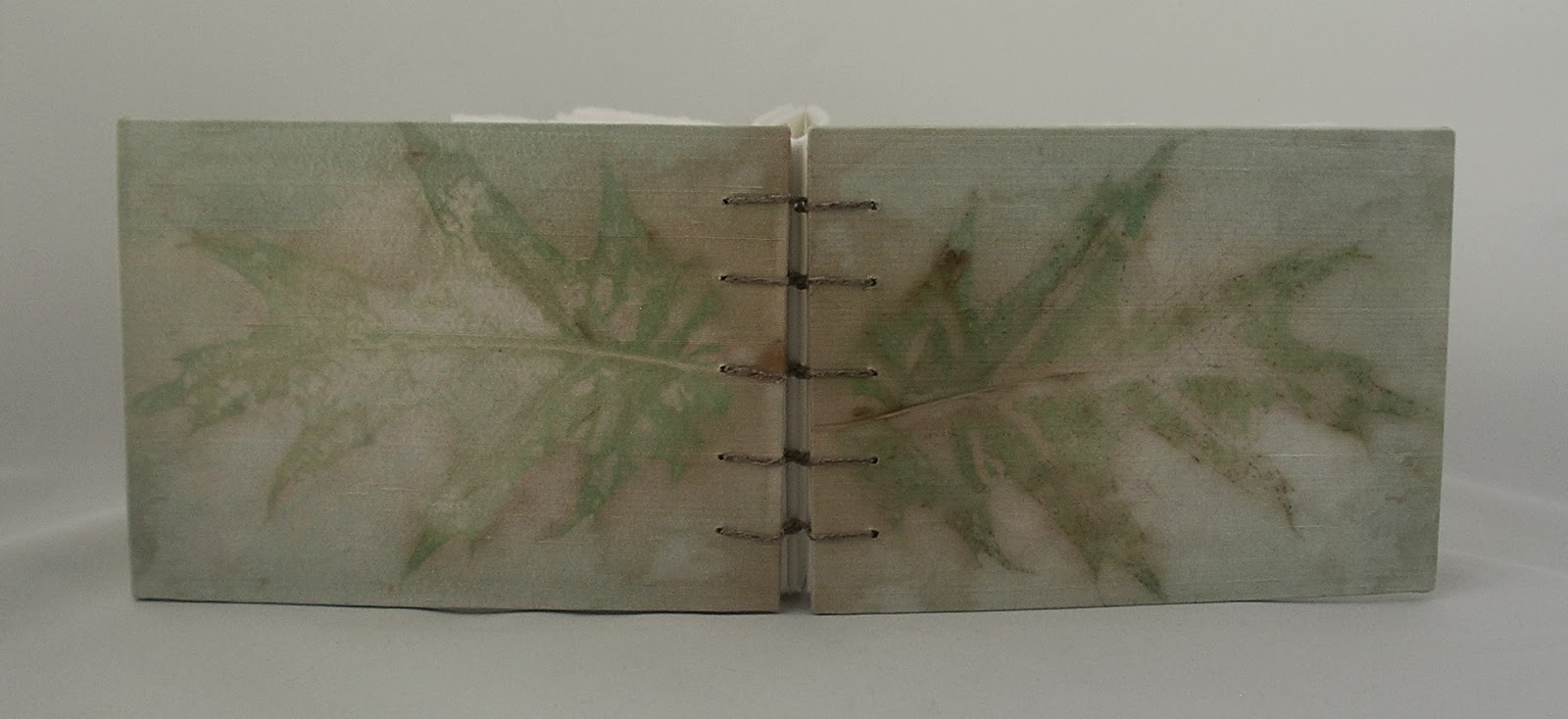Last Fall I soaked a few cherry branches and stems in some of Manitou Spring's iron rich water*. I soaked some vintage cotton along with the branches and left them to soak for 48 hours. Then I wrapped the branches in the fabric and steamed them and let them to cure for a week. Upon unwrapping I immediately saw this landscape. This is all nature's doing (except for the sketch of the tree on the left.) Click on the image for a larger view.

My original plan was to "bring out" the landscape with stitch. Define the areas with thread marks to "improve" the scene. After two days of stitching, ripping, stitching, ripping, getting angry, stitching and ripping some more, I remembered my motto for 2013's year of eco-dyeing: Accept the gift which nature has to offer." Don't try to force things; don't ask mother nature to produce something similar to a rubber stamp image. Just look for the magic in what I have, not in what I wish I had. I was so pleased with the scene my eye was seeing in the lines created by the contact of the branches with the fabric and the shapes made by the bleed of the pigments. But then I lost myself in trying to make things too realistic and not trusting that a viewer's brain could also fill in the blanks and imagine the trees, bushes, water, etc. So after more ripping this is what I have now.

There is still more ripping to do. In the foreground you'll notice a line of white stitching, It's covering up the resist mark made by a stem which gives a nice line in the landscape. The stitching, to me, just makes it too obvious and like I am trying to control the scene too much. Ripple marks in the water on the right, they are going too. The only stitch I really like is the tree. I think it provides a nice focal point and adds to the mood of the scene.
So I would love to hear your thoughts. Do you go by the less is more, or more is more line of thought. I think I use both approaches but I am getting better at discerning when it is best to use one over the other.
*Iron Spring water contains 13.30ppm (equals milligrams per liter) of iron. When you initially collect the water, it looks clear, but after settling for a few hours you can see red stuff floating around in it. GROSSSSSSSSSSSS. Which is why I dye with it and don't drink it.

































